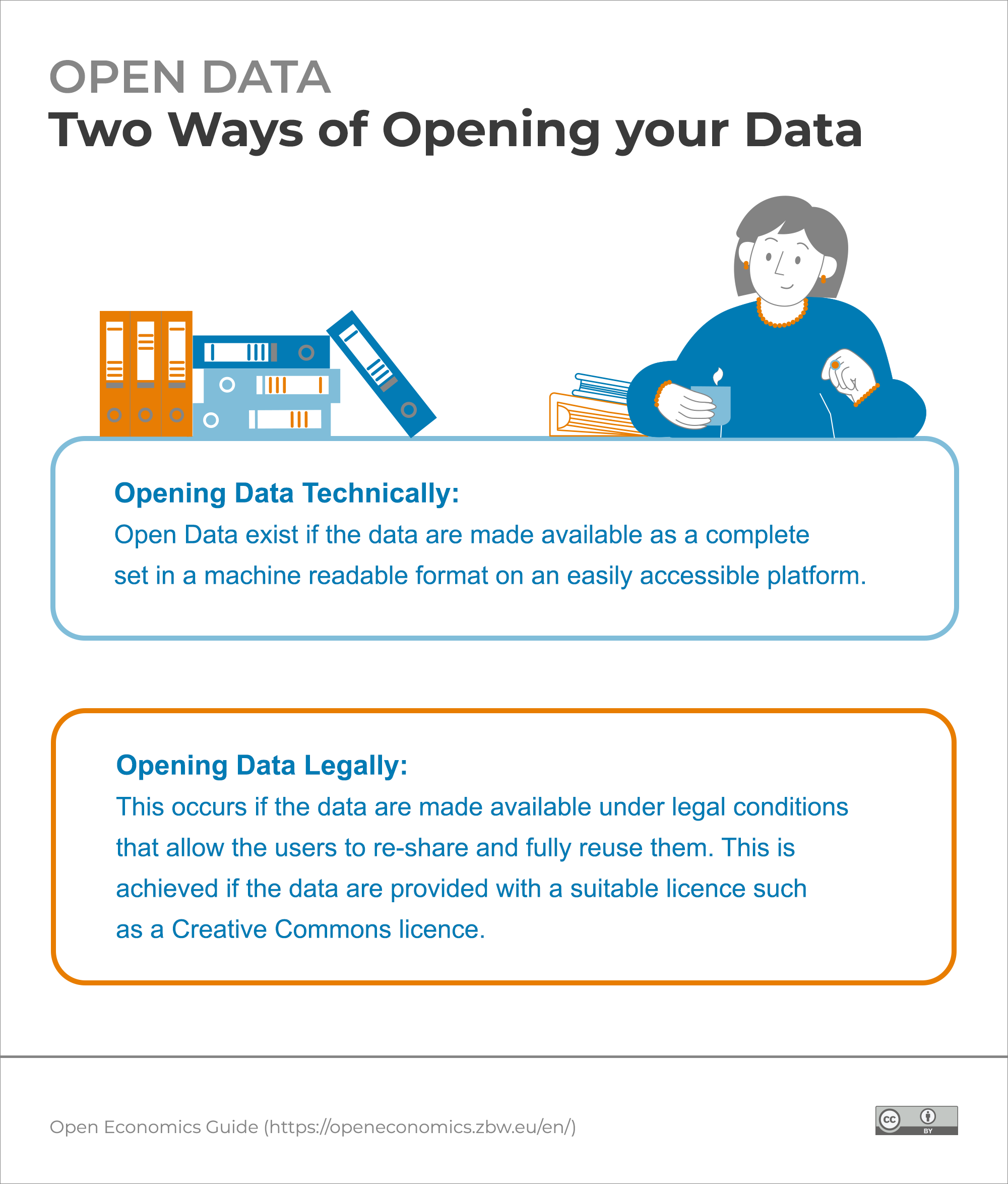Publishing Open Data Yourself
Share data and materials as often as possible publicly. In many journals, it is already a prerequisite that authors share data on request, if they want their work to be published. It’s much more efficient, however, if you release your data yourself proactively, and can offer a series of further advantages. It doesn’t need to take a lot of effort to open data. As a simple guide: you need to differentiate between two fundamental ways to make Open Data possible:
- Opening data technically: Open Data exist if the data are made available as a complete set in a machine readable format on an easily accessible platform.
- Opening data legally: This occurs if the data are made available under legal conditions that allow the users to re-share and fully reuse them. This is achieved if the data are provided with a suitable licence such as a Creative Commons licence.

Proceed as follows, in order to publish Open Data:
- Make the sharing of Open Data a standard procedure in your research cycle.
- Check if you have the possibility of pre-registration or if this may be relevant to you.
- Follow the FAIR data principles in working with your research data.
- Deposit your data preferably in a repository with a suitable licence. Here they are safely stored, remain retrievable and can be referenced during the course of an associated publication. A repository normally gives DOIs or other permanent identifiers for datasets. It ensures long-term maintenance and availability, also accessibility and a wider dissemination.
- Publishing a data paper in a data journal is a further option: A data paper is a scientific article that deals with the description of a raw dataset and the methodology of data collection. It can be published in a data journal that only publishes these kinds of articles, or in a conventional journal.
- Furthermore, your research results can of course also be published in the context of a classic journal publication. Depending on the journal, there are three different types: a) as a journal publication in which the research data are stored in an external data repository, b) as a journal publication in which the research data are deposited in a data archive of the journal or c) as supplementary material to a conventional research publication. For the final option, one disadvantage is that the research data are quasi only an afterthought to the journal publication. They are less easy to find, because no individual metadata are collected for them, and they receive no individual DOI.
- Just one idea of many: you can naturally also communicate and/or discuss your research results on your personal website or in social networks.

The various routes for research data are described in a video “Research data to publications” from the RWTH Aachen University.
One way to publish Open Data is to upload the data to the OSF. This is described in worksheet 4 “Make your own data sustainable and transparent” from the worksheet series of the Open Science Magazine of the ZBW. Another way is to publish on GitHub. The tool Octopub guides you step-by-step through the tasks required to publish a dataset on GitHub.